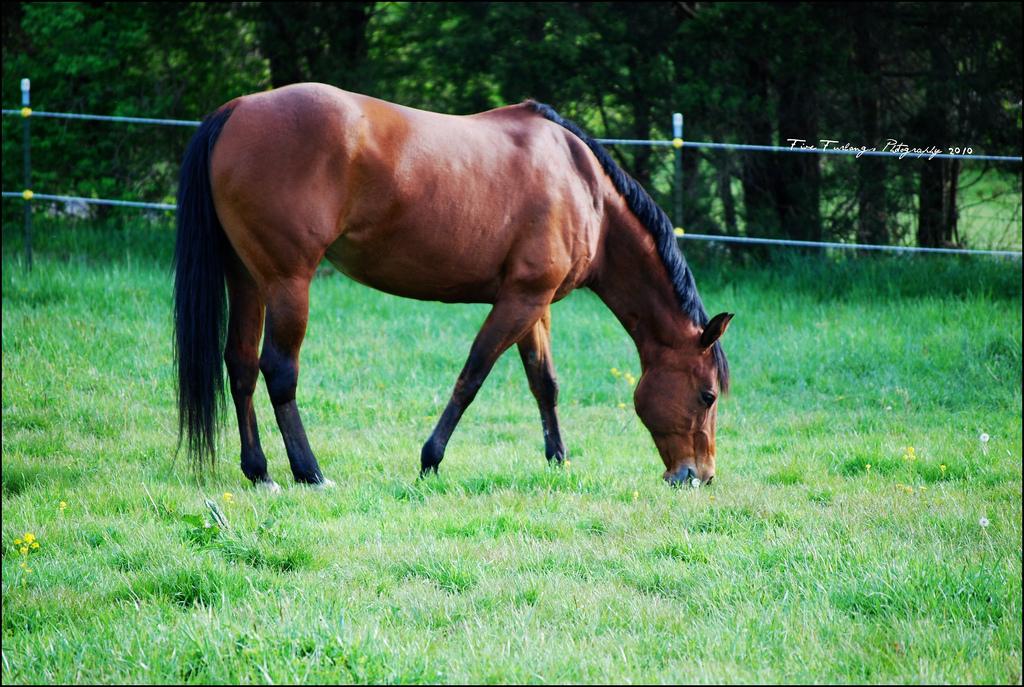
Holistic Treatments for Lyme Disease
How you can supplement your horse’s conventional Lyme treatment.
If you’ve been watching the news this spring, you know that Lyme’s disease is already a hot topic — and it’s just barely summer! Lyme, along with other tick-borne illnesses, are especially of concern for us equestrians because our equines are at-risk, too.
If your horse is diagnosed with Lyme, (read more about that in a previous article here), there are a number of holistic treatment options that can work along with antibiotic treatments to keep your horse as comfortable, and as healthy as possible.
“The typical Lyme treatment protocol includes heavy doses of antibiotics,” said integrative veterinarian and owner of the Harmany Equine Clinic, Dr. Joyce Harman. “While antibiotics are effective at targeting the spirochete bacteria that cause Lyme, antibiotics suppress the immune system. The reason is because two-thirds of the immune system lies within the gut wall and antibiotics create inflammation in the gut.”
Here are a handful of her favorite immune system-boosting holistic supplements:
Japanese Knotweed:
It’s more than just a pesky weed! Japanese knotweed is highly effective in treating Lyme. It enhances and modulates immune function, is active against a number of bacteria, is anti-inflammatory for both bacterial and arthritic inflammations, and protects the body against endotoxin damage.
Knotweed enhances blood flow, especially to the eye, heart, skin, and joints. This makes it especially useful in Lyme as it facilitates blood flow to the areas that are difficult to reach to kill the spirochetes.
Colostrum:
It’s often referred to as “liquid gold,” as it’s what provides mammals with immunity after birth. However, it’s not just for newborn animals! Colostrum is a great way to naturally strengthen the immune system and boost the gut.
When choosing a colostrum for your horse, be sure to pick a product that is collected from grass-fed cattle — try to stay away from colostrum sourced from large commercial dairy farms, as those cows usually aren’t grass-fed and can be pumped full of GMOs and hormones. Colostrum EQ from BioStar is a great source!
Probiotics:
When using antibiotics, probiotics are an absolute necessity. There is certainly controversy about the timing of the probiotics, and there are many conventional practitioners who feel probiotics should not be given until after the antibiotics are finished. However, the only bug we are concerned about killing with antibiotics is the spirochete.
Most other bacterial species are valuable assets. The antibiotics may very well kill off some of the probiotics you feed, but that is why it’s important to continue probiotics for several to many months after any antibiotic therapy is finished. ProBi from Advanced Biological Concepts and Digest Plus from Hilton Herbs are fantastic choices and can be used together for several months, as they have different methods of action in the body.
Vitamin C:
Vitamin C is one compound that is inexpensive and easy to feed. It is readily available in bulk form and palatable with the dose of 4 to 8 gm being the most desirable. Vitamin C is well known for its action in collagen, which is one of the tissues particularly damaged by the spirochete. Camu camu (Myrciaria dubia) is an excellent source of natural vitamin C. Vitamin C mixed with bioflavonoids and quercetin is also a good source (Equilite).
Omega-3 Fatty Acids:
Omega-3 fatty acids are anti-inflammatory as well as supportive to the immune system. They can be obtained through feeding whole flaxseed (inexpensive), naturally stabilized ground flax, hemp seeds or Chia seeds (a very stable source of Omega 3s). Flax or hemp oils can be used however they must be refrigerated during warm or hot weather. Three to six ounces twice a day can be used with the seeds, less volume with the oils.
Whatever you chose, be sure to consult your veterinarian so that he or she is in the loop regarding your supplementation.
About Joyce Harman: Dr. Joyce Harman opened Harmany Equine Clinic, Ltd in 1990, bringing holistic healing to horses from all walks of life, backyard retirees to Olympic competitors. Over the years, Dr. Joyce Harman has observed and adapted to the changing needs the industry. Twenty-plus years ago, no one had heard of Lyme disease or Insulin Resistance, yet today that makes up a large part of her clinical practice.
In 2001, she wrote the first paper in a peer-reviewed journal about the possibility that horses have insulin resistance (IR), and now it is part of our every day conversation. In 2004 she published the first comprehensive book on English saddle fitting since the 1800’s, with the western version of the book following in 2006. To this date, these books are the only books written by an author who is independent from a saddle company, which brings unbiased information to the horse world.
In 2015, Dr. Harman released the Harmany Muzzle, a customizable and breathable grazing muzzle designed with the horse in mind. Because she deals extensively with metabolic and insulin resistant horses, she felt it was her duty to offer them a comfortable muzzle option.






Leave a Comment